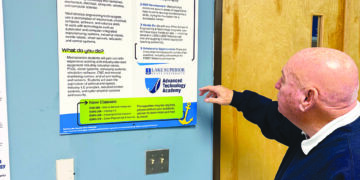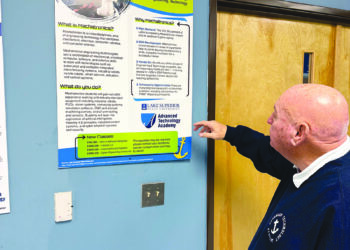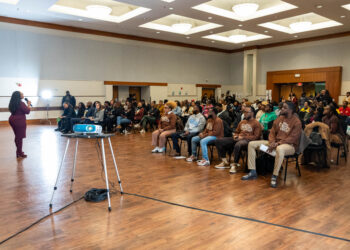“Pero maestra, no entiendo inglés.”
Daniela arrived from Venezuela just weeks earlier, speaking only Spanish. In addition to coping with the anxiety of being a newcomer, she was now expected to sit and take a state standardized test at the same level as my native-English speaking students. Knowing there was nothing I could do, I gently explained in Spanish that she should just try her best, as she looked up at me, helpless and discouraged.
Experiences like Daniela’s happen countless times each year, especially as Michigan’s English Learner population climbs. Between 2011 and 2022, the number of English Learners in Michigan schools rose from 60,000 to 92,000. The number of newcomers in my classroom with limited English proficiency has increased each year and without proper supports in place, it is becoming increasingly challenging to meet the needs of these students. Newcomer students like Daniela are deserving of the same quality education as their peers, but as a state we are failing to adequately fund said education.
In my classroom, I am trying different strategies to help Daniela make progress. I utilize visuals in my instruction whenever possible, and provide Spanish-English cognates to help Daniela make connections in her native language. But these strategies only go so far. Students with limited English proficiency like Daniela need more support beyond what I can provide within the classroom.
I already know what needs to be done in order to provide the best education possible for English Learners, but I also know that doing so is more costly than educating native English-speaking students. English Learners need support acquiring language as well as accessing grade level standards and instruction. They need dedicated time in an English as a Second Language classroom, where they can learn English and build community with their peers. Their families need resources to aid them as they settle in a new country, and many newcomers also need mental health services, having experienced the stresses of immigrating to a new country.
Implementing such programs requires a great deal of investment in quality professional development for teachers like me around best instructional practices, small group and one-on-one tutoring services for students to bolster their language skills, as well as both translation and wraparound services to engage with the families of English Learners.
Based on recent research from The Education Trust-Midwest, providing an adequate and equitable education for these students will cost approximately $500 million. In the past year, Michigan spent $26.4 million. We must address this nearly $480 million gap in funding and increase our spending. When it comes to equitable funding, which includes that of English Learners, Michigan ranks among one of the worst states. Though we have made progress in this past year’s School Aid Budget, immigration is driving the population in our state, and the number of English Learners in Michigan classrooms like mine will only continue to grow. If we don’t act, more and more Michigan students will have the same discouraging experience that Daniela had. Here are a few things we need to do:
Increase additional funding for English Learners
The current formula for English Learner additional funding is provided on a sliding scale of 1% to 11%, based on students’ WIDA scores, a test that measures English Language proficiency. Other states, like Georgia and Maryland are providing this student population with additional funding up to 126%. It’s time that we keep up with our peers and increase the weights of additional funding. This funding will provide educators and schools the tools they need to properly educate our English Learners.
Expand the Opportunity Index
Michigan has made historic progress in terms of equitable funding by adopting an “Opportunity Index”, which gives additional funds to school districts based on their levels of concentrated poverty in order to educate “at-risk” students. This includes funding for English Learners. Currently, schools are being paid out 47% of their allotted funding. This is a huge improvement, but it is not enough. If we value equity in our schools, the state must increase the provided funding beyond 47%.
We need to act now to ensure more than incremental improvement. Students like Daniela do not have decades to wait for an equitable education. The time is now to realize our goal of an equitable education for all Michigan students. The future health of our state and our economy depend on it.
















































